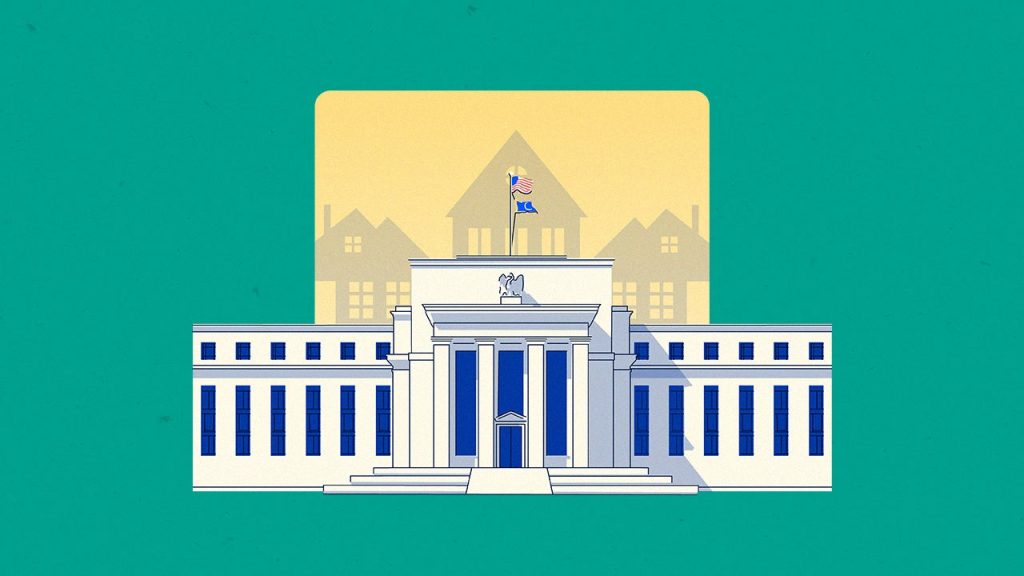Image by Chorna Olena/Getty Images; Illustration by Austin Courregé/Bankrate
The Federal Reserve’s interest rate decisions influence what you pay for variable-rate home equity lines of credit (HELOCs) and new home equity loans. Let’s break down how the Fed’s monetary policy affects how much it’ll cost you to borrow against your home.
Federal Reserve July 2025 meeting
At its latest meeting, the Federal Reserve stood pat on interest rates, leaving them unchanged for the fifth time in a row. Fed officials took a wait-and-see mode to gauge the potential impact of President Donald Trump’s tariffs.
The July meeting was one for the history books. For the first time in more than three decades, two Fed governors dissented, supporting a rate cut. The central bank’s next monetary policy-setting meeting takes places September 16-17.
How do Federal Reserve decisions affect HELOCs and home equity loans?
When the Fed changes the federal funds rate — the interest rate banks charge each other for overnight loans to meet reserve requirements — it affects other benchmarks, including the prime rate. The prime rate usually runs 3 percentage points higher than the fed funds rate, and tends to parallel its moves.
Many home equity lenders directly tie the rates on HELOCs and home equity loans to the prime rate. Because HELOCs often have variable interest rates, the cost of borrowing one can rise or fall with the prime rate and fed funds rate — making your HELOC more or less expensive.
Home equity loans come with fixed rates, so they aren’t as deeply impacted by Fed decisions. Once you close the equity loan, your rate won’t change. If you’re thinking of getting a new home equity loan now, however, the rates you see are influenced by the fed funds rate.
How soon do HELOC rates change after a Fed meeting?
It happens fast. Current HELOC borrowers can expect their interest rate and payments to adjust within a month or two after a Fed rate change. Current home equity loan borrowers won’t see any difference, as their rate and payments are fixed. However, the rates advertised for new home equity loans will reflect any Fed change fairly quickly, as well.
“For new offers on both products, rates could change right away after the Fed makes a move,” says Ted Rossman, senior industry analyst at Bankrate. “It’s up to the lender, but when the market changes, they tend to adjust pretty quickly.”
If you already have a HELOC but haven’t drawn from it, rising rates won’t affect your wallet all that much. If you do owe, you’ll have a larger monthly payment to cover, usually within the next two billing cycles. This applies whether you’re in the draw or repayment phase.
If rates do rise, you might want to explore whether you can lock in a fixed rate on a portion of your HELOC balance. This isn’t an option with every lender, and there might be some limitations or fees if it is.
Key Fed moves that impacted home equity rates
Is now a good time to get a HELOC or home equity loan?
Although the Fed hasn’t lowered rates since 2024, its cuts last year have made tapping home equity cheaper. The average HELOC rate closed out 2024 almost a full percentage point lower, according to Bankrate’s national survey of lenders. Currently, HELOC rates were averaging 8.26 percent as of July 30 and are forecast to retreat further. At the same time, home equity loan rates were averaging 8.25 percent. They, too, are expected to continue on a downward course.
“While homeowners are sitting on a mountain of home equity, now isn’t a particularly advantageous time to borrow against it,” says Greg McBride, CFA, chief financial analyst for Bankrate. “Home equity rates are high and won’t come down meaningfully unless the Fed cuts interest rates meaningfully. Homeowners in parts of the South and West, such as Florida and Texas, have to keep a careful eye on home values, as any slide in prices erodes both your equity and borrowing power.”
Whether you opt for a home equity loan or HELOC, it’s essential to have a game plan for paying it back.
“Don’t borrow against home equity for frivolous or discretionary purposes,” McBride says. “Home equity isn’t a loaf of bread. It won’t go stale if you leave it untouched.”
Latest on the Federal Reserve
Why we ask for feedback
Your feedback helps us improve our content and services. It takes less than a minute to
complete.
Your responses are anonymous and will only be used for improving our website.
Help us improve our content
Thank you for your
feedback!
Your input helps us improve our
content and services.
Read the full article here
